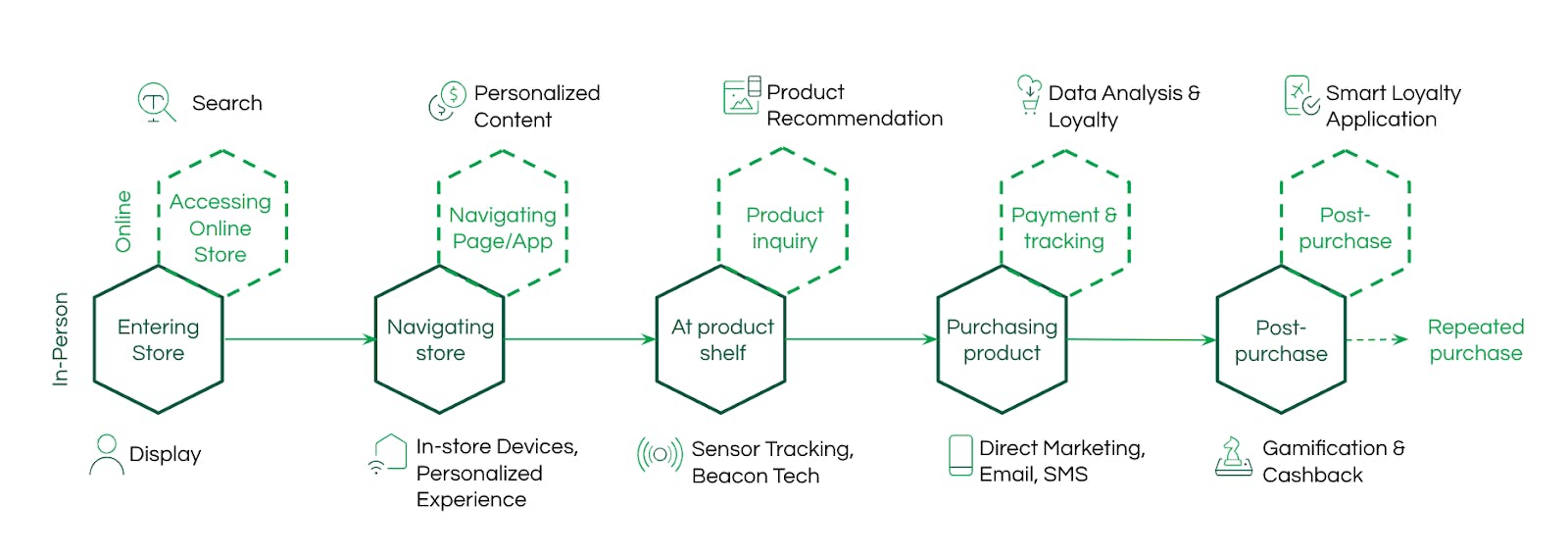The Four Data Platform Must Haves for Personalized Retail
June 24, 2021 | Updated: November 3, 2021
Even before the events of 2020, consumers were increasingly embracing a hybrid shopping experience that mixed the digital and the physical. Rather than making a binary choice between “bricks” or “clicks”, the customer journey can start online, before moving to a physical store for an in person demo, and then back online for the final purchase.
As if that wasn’t hard enough for retailers to handle, consumers are also expecting the same personalized treatment they’re used to online to follow them in store too. Personalized store greetings, location-based offers on nearby products, and the hyper-customization of products, services, and special offers are quickly becoming table stakes experiences. With in-store beacons, electronic shelf labels, smart mirrors, AI, and a host of other connected technologies, the next frontier of personalization is the seamless connection, and blurring, of the digital and physical retail experience.
The future of retail, therefore, belongs to those able to differentiate themselves with a better omnichannel, personalized experience than the competition.

Talk data to me
For personalized retail to work, in real time and on every channel, retailers need to master the collection, analysis, and deployment of data. Specifically, retailers need a data platform built for the following:
Data privacy: The more data you collect, and the more personalized you get, the greater your responsibility to be a good steward of that data. Every aspect of data privacy, from the latest in authentication and authorization to auditing, encryption, and compliance, should be at the heart of your data strategy and a core capability of your data platform. In addition, customers expect more than just complete data privacy; they also demand that retailers allow them to take control of their data when requested.
Agility: Retailing today means ingesting many different types of data from many different sources. Whereas yesterday’s retailers built their infrastructure using relational databases, with a rigid schema defined by tables, tomorrow’s retail leaders will choose a data platform based on a flexible data model, such as the document model. This flexibility can be particularly helpful for modeling data where structures can change between each record, such as polymorphic data. It also makes it easier to evolve an application during its life cycle, such as by adding new fields or enriching application-generated data with third-party data sources to provide an even fuller picture of the customer.
Real-time data: While many retailers use operational analytics and intelligence in decision making, the data they’re working from is often days old, at best. The need now is for real-time data to influence real-time, real-world customer behavior. To get there, retailers must have a data platform that is capable of concurrently supporting both operational and analytical workloads without sacrificing performance.
Developer and DevOps enablement: The speed at which retailers can bring new applications and services to market has never been more important. A modern data platform enabled through a database-as-a-service capability, like MongoDB Atlas, gives developers the freedom and flexibility to work seamlessly with data wherever their applications and users need it.
The digital differentiation
With the database foundations in place, retailers can begin to differentiate themselves digitally by using technology in unexpected ways.
Think loyalty programs activated by in-store facial recognition sensors, beacon technology connecting with apps to guide customers through stores, chat bots to help with customer questions, and augmented reality apps to help shoppers try out products at home. Strategically and successfully implementing and combining these digital capabilities will drive more customers to your products, be it online or in-store. Take a look how OTTO reinvented their ecommerce personalization for more than 2 million users per day. They were able to slash catalog update times from 12 hours to 15 minutes.
Retailers can also build omnichannel experiences that blur the boundaries between the online and in-store spheres. This could take the form of scanning QR codes on in-store items for deals or information, ordering out-of-stock items to be sent to a specific store for pickup, returning online purchases to physical outlets, or redeeming loyalty points on an app for in-person purchases.
Building a comprehensive picture of consumers is vital for understanding how you can create this experience. Are your consumers using smart speakers to order products? Are they active on your mobile app instead of going in-store? Can you gather data on in-store behavior — and provide online recommendations for shoppers to continue their journeys via other channels? By having this view, you can create the seamless, personalized experience your consumers desire — through any channel. Find out how AO.com turned to MongoDB to build a single view to leverage real-time data to build modern applications for everything from personalization to delivery tracking.
Lastly, retailers must build a resilient supply chain to ensure a consistent flow of inventory from factory to warehouse to stores and customer homes in both directions — for purchases and returns (reverse logistics). Organizations can utilize RFID tags, GPS tracking, IoT devices, and sensors to locate, mobilize, and manage inventory across large areas and different branches and warehouses, oversee returns and exchanges, and even forecast demand based on historical trends.
By unifying data from disparate sources, retailers can streamline and strengthen the supply chain, improving inventory management and enhancing customer relationships. Now, shoppers are much less likely to be blindsided by product shortages or shipping delays. Further, when these events do occur, retailers can communicate with buyers in a timely and open manner. Boxed, a leading wholesale club in the United States, who needs to deliver its products according to a strict schedule built its entire digital environment from scratch and on MongoDB Atlas, including supply chain management infrastructure, enterprise resource planning systems, warehouse management, robotics, and more. Learn how they managed to cope with a traffic spike of 30 to 35 times normal levels.